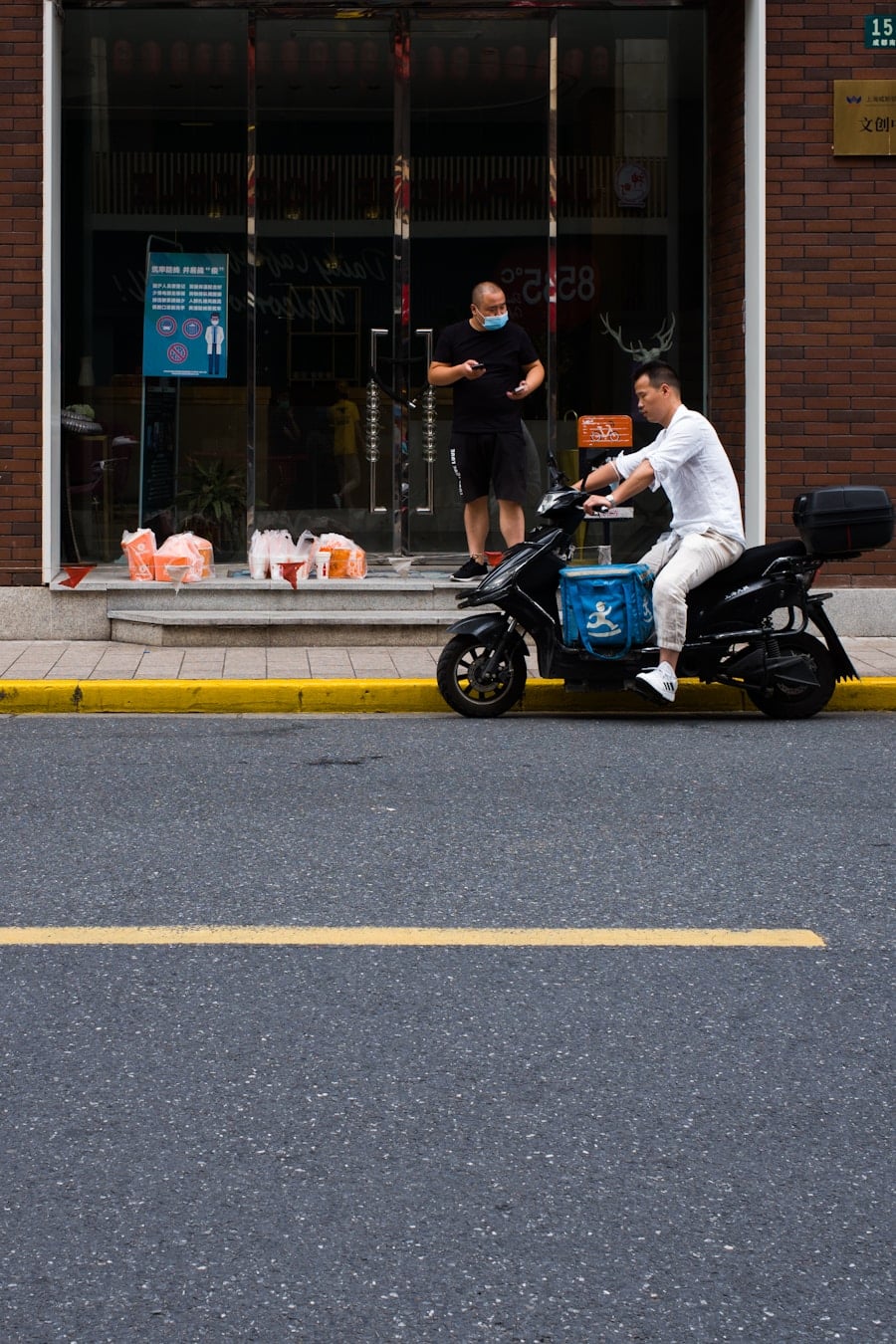In recent years, urban centers around the globe have witnessed a significant surge in the deployment of automated delivery bots. These small, wheeled robots are designed to navigate sidewalks and streets, delivering goods directly to consumers’ doorsteps. The rise of e-commerce, accelerated by the COVID-19 pandemic, has created an unprecedented demand for efficient and contactless delivery solutions.
Companies like Starship Technologies, Amazon, and Postmates have pioneered the use of these bots, which are equipped with advanced sensors and artificial intelligence to navigate complex urban environments. As cities become increasingly congested and the demand for rapid delivery services grows, automated delivery bots are emerging as a viable solution to meet these challenges. The technology behind these delivery bots has evolved rapidly, enabling them to operate in diverse urban settings.
Equipped with cameras, ultrasonic sensors, and GPS, these bots can detect obstacles, navigate around pedestrians, and even cross streets safely. Their compact size allows them to maneuver through crowded sidewalks and narrow alleyways, making them particularly suited for urban environments where traditional delivery vehicles may struggle. As cities continue to embrace smart technology and innovation, the integration of automated delivery bots into the urban landscape is becoming more commonplace, signaling a shift in how goods are transported and delivered in densely populated areas.
Key Takeaways
- Automated delivery bots are becoming increasingly common in urban centers, revolutionizing the way goods are transported and delivered.
- Advantages of automated delivery bots include faster delivery times, reduced traffic congestion, and lower delivery costs, while challenges include safety concerns and potential job displacement.
- The impact on jobs and employment in urban centers is a topic of concern, as automated delivery bots have the potential to replace traditional delivery jobs.
- Regulations and policies play a crucial role in governing the use of automated delivery bots, addressing safety, liability, and operational guidelines.
- Integrating automated delivery bots with existing transportation and infrastructure systems is essential for their successful implementation and operation in urban centers.
Advantages and Challenges of Automated Delivery Bots
The advantages of automated delivery bots are manifold. One of the most significant benefits is their potential to reduce delivery times and costs. By operating autonomously, these bots can make deliveries without the need for human drivers, which can lead to lower operational expenses for companies.
Additionally, they can work around the clock, providing consumers with the convenience of 24/7 delivery services. This capability is particularly appealing in urban centers where consumers increasingly expect instant gratification when it comes to receiving their purchases. However, the deployment of automated delivery bots is not without its challenges.
One major concern is the safety of pedestrians and other road users. As these bots navigate busy sidewalks and streets, there is a risk of accidents or collisions with pedestrians, cyclists, or vehicles. Furthermore, the technology is still evolving, and issues such as navigation errors or mechanical failures can pose significant risks.
Additionally, there are concerns about the potential for these bots to contribute to sidewalk congestion, particularly in densely populated areas where space is already at a premium. Striking a balance between the benefits of automation and the need for public safety remains a critical challenge for cities adopting this technology.
Impact on Jobs and Employment in Urban Centers

The introduction of automated delivery bots raises important questions about their impact on jobs and employment in urban centers. On one hand, proponents argue that these technologies can create new job opportunities in areas such as robotics maintenance, software development, and logistics management. As companies invest in automated systems, there will be a growing demand for skilled workers who can design, maintain, and improve these technologies.
Moreover, the efficiency gained from using delivery bots could allow businesses to expand their operations, potentially leading to job creation in other areas. Conversely, there are legitimate concerns about job displacement resulting from automation. Delivery drivers and couriers may find their roles diminished or eliminated as companies increasingly rely on bots for last-mile deliveries.
This shift could disproportionately affect low-wage workers who depend on these jobs for their livelihoods. The challenge for policymakers will be to address these potential disruptions by providing retraining programs and support for workers transitioning into new roles within an evolving job market. As urban centers adapt to the rise of automated delivery systems, it will be essential to consider both the opportunities and challenges presented by this technological shift.
The Role of Regulations and Policies in Governing Automated Delivery Bots
As automated delivery bots become more prevalent in urban environments, the role of regulations and policies in governing their use becomes increasingly critical. Local governments must establish clear guidelines that address safety standards, operational parameters, and liability issues associated with these autonomous vehicles. For instance, regulations may dictate where delivery bots can operate—such as designated lanes or specific hours of operation—to minimize conflicts with pedestrians and other road users.
Moreover, policymakers must consider how to integrate these regulations with existing transportation frameworks. This includes addressing issues such as data privacy and security, as many delivery bots collect data on their surroundings to navigate effectively. Ensuring that this data is handled responsibly will be crucial in maintaining public trust in these technologies.
Additionally, as different cities adopt varying regulations regarding automated delivery bots, there may be a need for standardization at a regional or national level to facilitate seamless operations across jurisdictions.
Integration with Existing Transportation and Infrastructure Systems
The successful integration of automated delivery bots into existing transportation and infrastructure systems is essential for maximizing their potential benefits. Urban centers must assess how these bots can coexist with traditional modes of transportation while minimizing disruptions to pedestrian traffic and vehicular flow. This may involve redesigning sidewalks or creating dedicated lanes for delivery bots to ensure safe navigation through crowded areas.
Furthermore, cities can leverage smart infrastructure technologies to enhance the efficiency of automated delivery systems. For example, traffic signals equipped with sensors could communicate with delivery bots to optimize their routes and reduce wait times at intersections. Additionally, integrating these bots with public transportation systems could provide a more comprehensive solution for last-mile deliveries, allowing consumers to access goods more conveniently while reducing reliance on personal vehicles.
By fostering collaboration between various stakeholders—including city planners, transportation agencies, and technology providers—urban centers can create an ecosystem that supports the seamless operation of automated delivery bots.
The Potential for Autonomous and Self-Driving Delivery Bots

The future of automated delivery bots is closely tied to advancements in autonomous vehicle technology. As self-driving capabilities continue to improve, there is potential for these bots to operate without any human oversight in a wider range of environments. This evolution could lead to significant cost savings for companies by eliminating the need for remote operators or monitoring personnel.
Moreover, fully autonomous delivery bots could enhance operational efficiency by optimizing routes based on real-time traffic data and environmental conditions. However, achieving full autonomy presents several technical challenges that must be addressed before widespread adoption can occur. For instance, ensuring that these bots can navigate complex urban environments safely requires sophisticated algorithms capable of processing vast amounts of data in real time.
Additionally, regulatory frameworks will need to evolve to accommodate fully autonomous systems while addressing safety concerns related to their operation in public spaces. As research and development efforts continue in this area, the potential for self-driving delivery bots could reshape the landscape of urban logistics.
Environmental and Sustainability Considerations
The environmental impact of automated delivery bots is an important consideration as cities seek sustainable solutions for urban logistics. These robots typically operate on electric power, which can significantly reduce greenhouse gas emissions compared to traditional gasoline-powered delivery vehicles. By replacing short car trips with electric-powered deliveries conducted by bots, cities could see a decrease in air pollution and traffic congestion.
The production of electric batteries raises concerns about resource extraction and waste management at the end of their life cycle. Additionally, if not managed properly, increased deliveries via automated systems could lead to greater overall consumption patterns that negate some environmental benefits.
Therefore, it is crucial for cities to implement policies that promote responsible manufacturing practices and encourage consumers to adopt sustainable behaviors alongside the use of automated delivery technologies.
The Future of Automated Delivery Bots in Urban Centers: Opportunities and Risks
Looking ahead, the future of automated delivery bots in urban centers presents both exciting opportunities and significant risks. On one hand, these technologies have the potential to revolutionize last-mile logistics by providing faster, more efficient delivery options that cater to consumer demands for convenience. As urban populations continue to grow and e-commerce expands further into everyday life, automated delivery solutions could play a vital role in meeting these needs while alleviating pressure on traditional transportation systems.
On the other hand, there are inherent risks associated with widespread adoption of this technology that must be carefully managed. Issues such as job displacement among traditional delivery workers, safety concerns related to pedestrian interactions with bots, and potential regulatory hurdles could hinder progress if not addressed proactively. Furthermore, as cities grapple with integrating these systems into existing infrastructure while ensuring equitable access for all residents, it will be essential to strike a balance between innovation and public welfare.
As urban centers navigate this complex landscape, collaboration among stakeholders—including government agencies, technology developers, businesses, and community organizations—will be crucial in shaping a future where automated delivery bots enhance urban living without compromising safety or equity. The path forward will require thoughtful consideration of both the opportunities presented by this technology and the challenges it poses as cities strive to create sustainable and inclusive environments for all residents.
If you’re interested in the future of technology and innovation, you may also enjoy reading about Top Trends on Digital Marketing 2023. This article explores the latest trends in digital marketing and how businesses can stay ahead of the curve in the ever-evolving landscape of online advertising. Just as automated delivery bots are revolutionizing urban centers, digital marketing trends are shaping the way companies connect with consumers in the digital age. Check it out for more insights on the future of technology and marketing.
FAQs
What are automated delivery bots?
Automated delivery bots are small, self-driving vehicles designed to transport goods from one location to another without the need for human intervention.
How do automated delivery bots work?
Automated delivery bots use a combination of sensors, cameras, and GPS technology to navigate urban environments and deliver packages to their intended destinations.
What are the benefits of using automated delivery bots in urban centers?
Automated delivery bots can help reduce traffic congestion, lower carbon emissions, and improve delivery efficiency in urban areas. They can also provide a cost-effective and convenient solution for last-mile delivery.
What are the challenges of implementing automated delivery bots in urban centers?
Challenges of implementing automated delivery bots in urban centers include navigating complex urban environments, ensuring safety for pedestrians and other vehicles, and addressing regulatory and legal issues.
What is the future outlook for automated delivery bots in urban centers?
The future of automated delivery bots in urban centers looks promising, with continued advancements in technology and increasing acceptance of autonomous vehicles. However, there are still challenges to overcome before widespread adoption can occur.

